Friday, September 29, 2023 – A WOMAN WITH EXTRAORDINARY TALENTS


FROM THE ARCHIVES
FRIDAY, SEPTEMBER 29, 2023
MAUD KATHLEEN LEWIS
CANADIAN FOLK ARTIST
ART GALLERY OF
NOVA SCOTIA
WIKIPEDIA
JUDITH BERDY
ISSUE# 1087
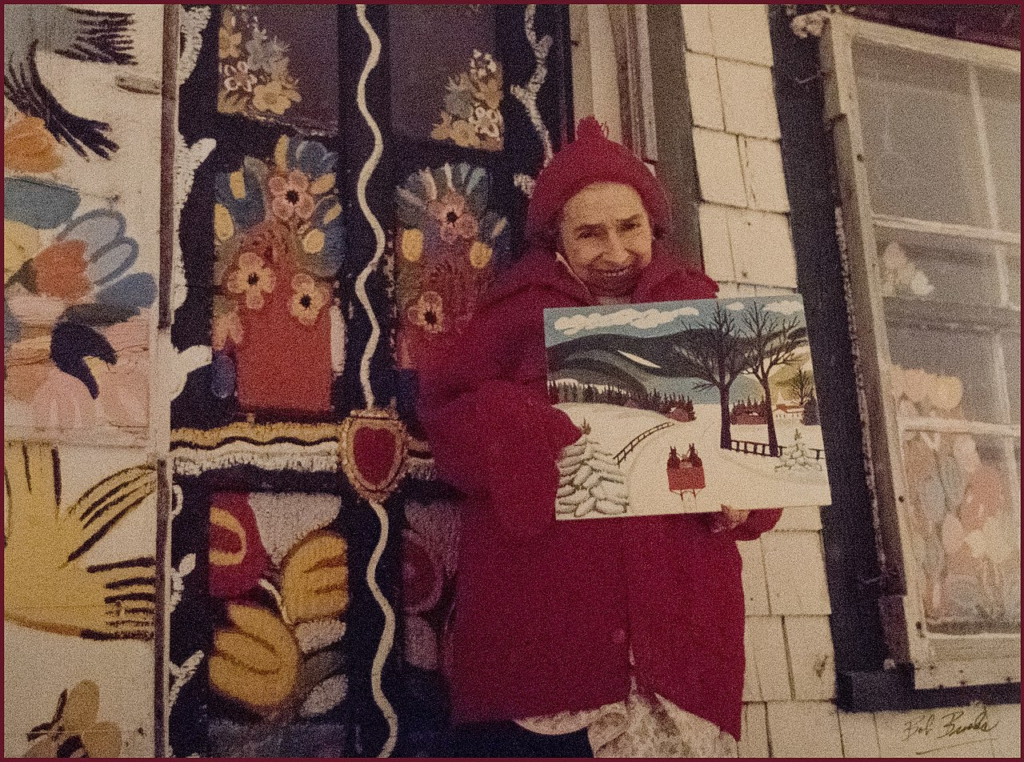
Recently, I was to be in Halifax, Nova Scotia and I asked Kathy Grimm about sites to see. Her daughter lives there and I knew she would have some good suggestions.
One was the Art Gallery of Nova Scotia to see the Maud Lewis collection. It was great fun to see the creativity of a woman who painted her entire house!!
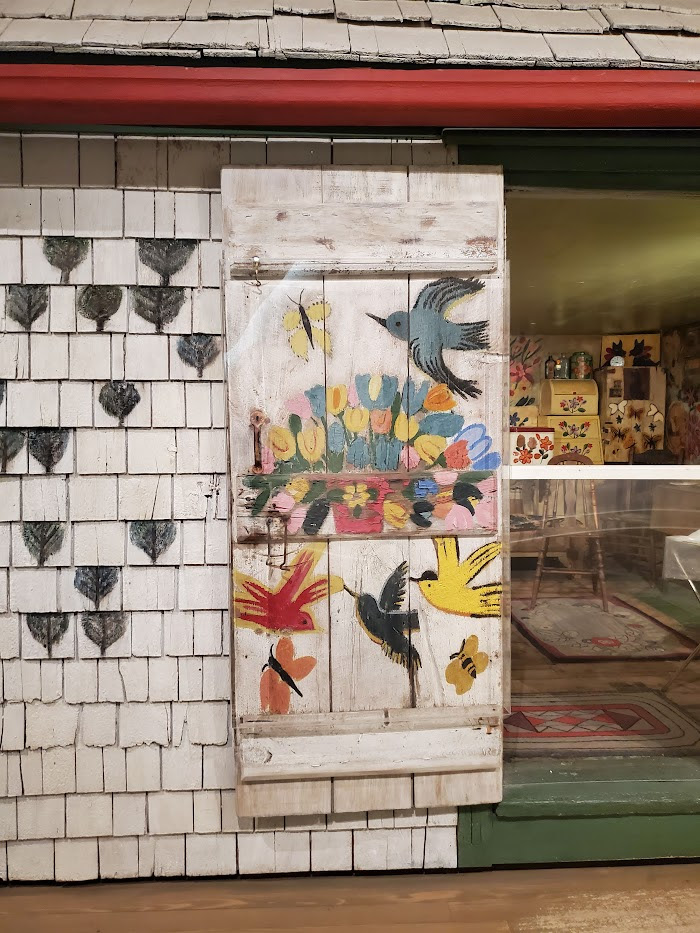
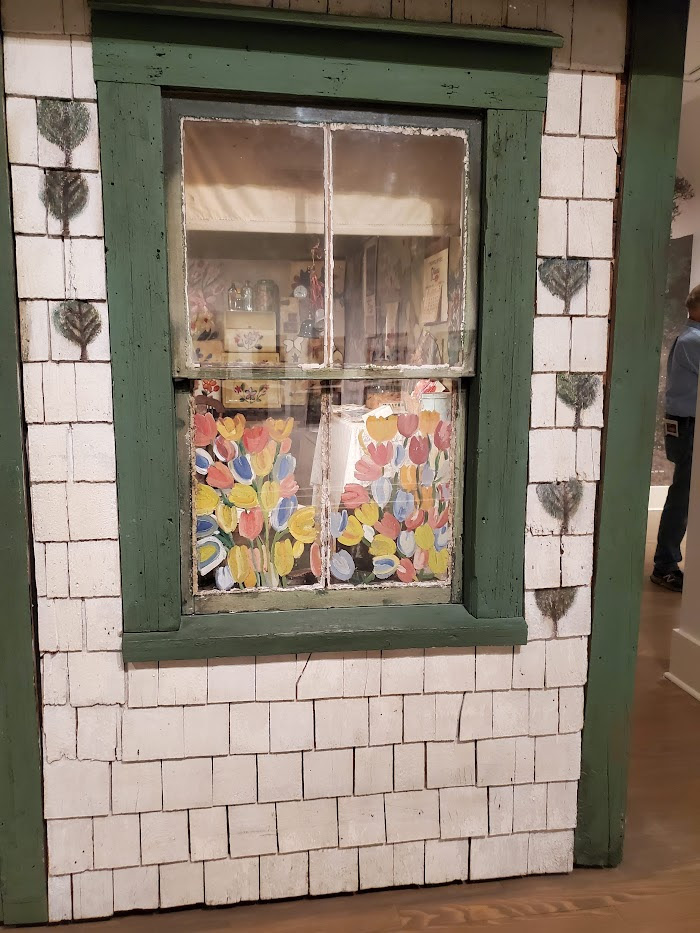
Doorway into Lewis’ home
Early life
Lewis was born in South Ohio, Nova Scotia, the daughter of John and Agnes (Germain) Dowley.[4][5] She had one brother, Charles. She was born with birth defects and ultimately developed rheumatoid arthritis, which reduced her mobility, especially in her hands. Lewis’ father was a blacksmith and harness maker who owned a harness shop in Yarmouth, Nova Scotia. His business enabled Lewis to enjoy a middle-class childhood.[3] She was introduced to art by her mother, who instructed her in the making of watercolour Christmas cards to sell.[6] Lewis began her artistic career by selling hand-drawn and painted Christmas cards.[7]
Lewis’ father John died in 1935, and her mother followed him in 1937.[4] After living with her brother for a short while, she moved to Digby, Nova Scotia to live with her aunt.[4]
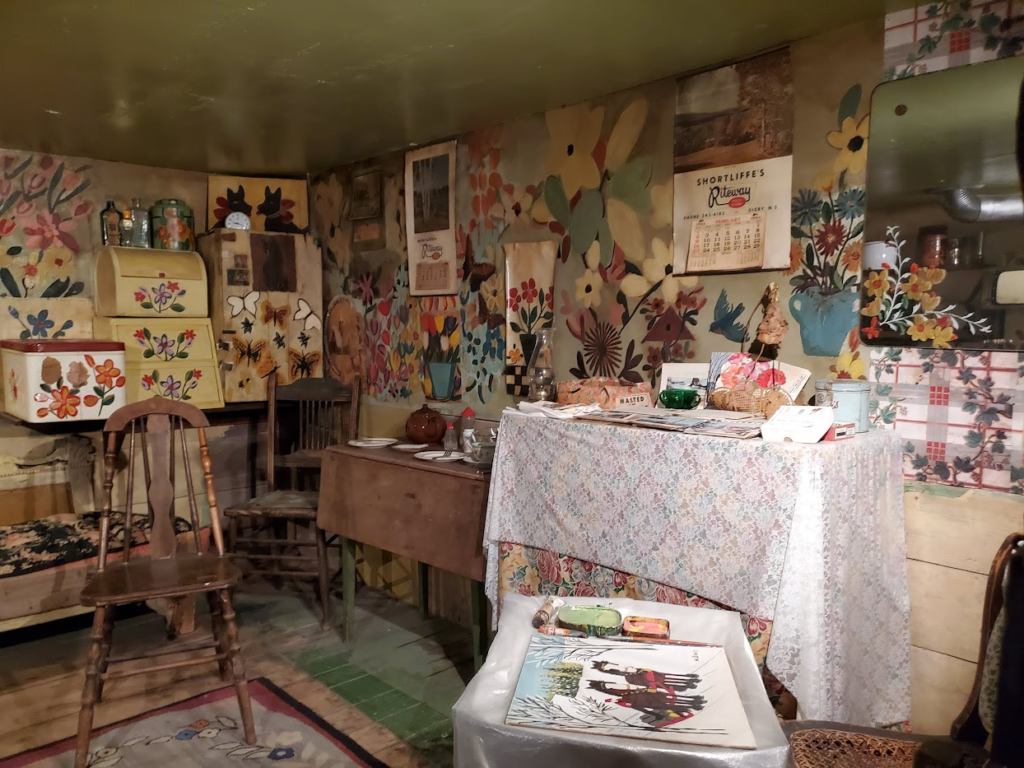
Cottage sitting room
Marriage
Dowley married Everett Lewis, a fish peddler from Marshalltown, on January 16, 1938, at the age of 34.[8] He also worked as the watchman at the county Poor Farm. According to Everett, Maud showed up at his doorstep in response to an ad he had posted in the local stores for a “live-in or keep house” for a 40-year-old bachelor. Several weeks later, they married.[9][4]
They lived in Everett’s one-room house with a sleeping loft, in Marshalltown, a few miles west of Digby. Maud used the house as her studio, while Everett took care of the housework.[10] They lived mostly in poverty.
Maud Lewis accompanied her husband on his daily rounds peddling fish door-to-door, bringing along Christmas cards she had painted. She sold the cards for five cents each, the same price her mother had charged for the cards she had made when Maud was a girl. These cards proved popular with her husband’s customers. When Everett was hired as a night watchman at the neighbouring Poor Farm in 1939, Lewis began selling her Christmas cards and paintings directly from their home.[3] Everett encouraged Lewis to paint, and he bought her her first set of oils.[11]
She expanded her range, using other surfaces for painting, such as pulp boards (beaverboards), cookie sheets, and Masonite. Lewis was a prolific artist and also painted on more or less every available surface in their tiny home: walls, doors, breadboxes, and even the stove. She completely covered the simple patterned commercial wallpaper with sinewy stems, leaves, and blossoms.[11]
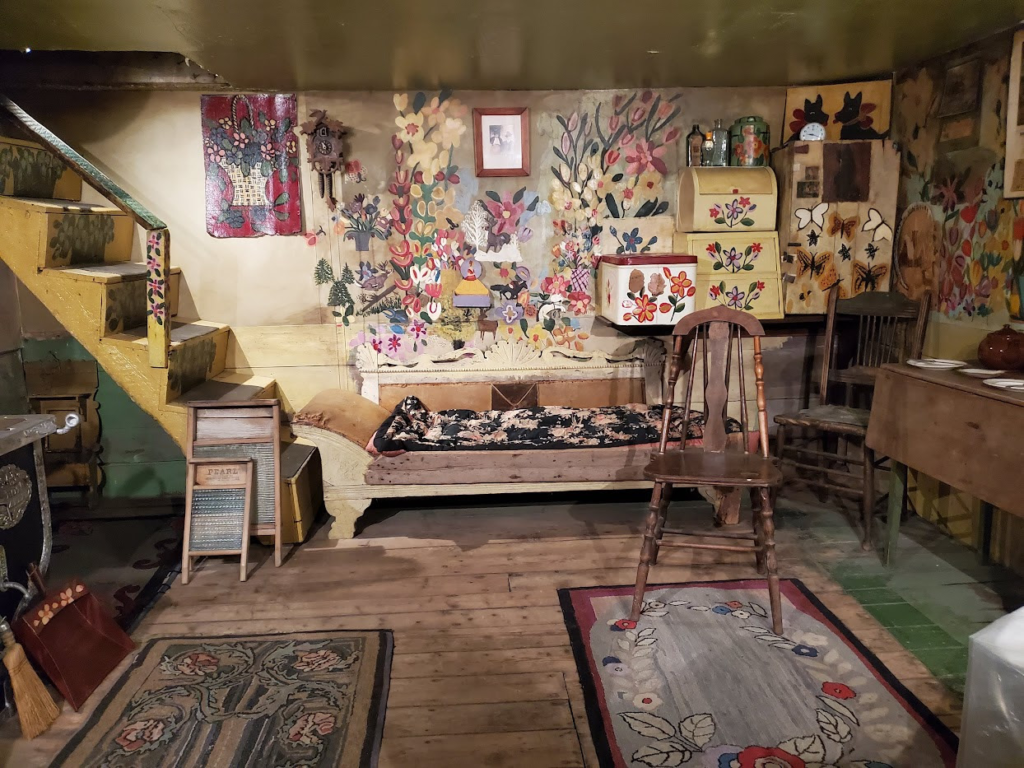
Stairway to upper level
Paintings

Maud Lewis Memorial in Marshalltown
Lewis used bright colours in her paintings, and her subjects were often flowers or animals, including oxen teams, horses, birds, deer, and cats. Many of her paintings are of outdoor scenes, including Cape Island boats bobbing on the water, horses pulling a sleigh, skaters, and portraits of dogs, cats, deer, birds, and cows. Her paintings were inspired by childhood memories of the landscape and people around Yarmouth and South Ohio, as well as Digby locations such as Point Prim and Bayview. Commercial Christmas cards and calendars also influenced her.
Lewis returned to the same subjects again and again, each time painting them slightly differently. For instance, she made dozens, if not hundreds, of images of cats over the course of her career. The serial nature of her practice was partly motivated by customer demand; she repeated compositions that sold well while discarding less popular ones. “I put the same things in, I never change,” she said of her style on the CBC program Telescope in 1965. “Same colours and same designs.”[12]
Many of her paintings are quite small, no larger than eight by ten inches, although she is known to have done at least five paintings that are 24 inches by 36 inches. For several years, Everett cut the boards for the paintings to size, although near the end of her career she was purchasing Masonite pre-cut to set dimensions.[3] The size of her paintings was limited by the extent she could move her arms, which were affected by arthritis. She used mostly wallboard and tubes of Tinsol, an oil-based paint. Her technique consisted of first coating the board with white, then drawing an outline, and applying paint directly out of the tube. She never blended or mixed colours.[13]
Early Maud Lewis paintings from the 1940s are quite rare. A large collection of Lewis’ work can be found in the Art Gallery of Nova Scotia (AGNS). It occasionally displays the Chaplin/Wennerstrom shutters (now part of the Clearwater Fine Foods Inc. collection) comprising 22 exterior house shutters Lewis painted in the early 1940s for some Americans who owned a cottage on the South Shore. Most of the shutters are quite large, at 5 ft x 1 ft.6 inches. Lewis was paid 70 cents a shutter.[citation needed]
Between 1945 and 1950, people began to stop at Lewis’ Marshalltown home on Highway No. 1, Nova Scotia’s main highway and tourist route, buying her paintings for two or three dollars each. Only in the last three or four years of her life did Lewis’ paintings begin to sell for seven to ten dollars. She achieved national attention as a folk artist following an article in the Toronto-based Star Weekly in 1964. In 1965, she was featured on CBC-TV’s Telescope.[14][15] Two of Lewis’ paintings were ordered by the White House in the 1970s during Richard Nixon‘s presidency.[16] Her arthritis limited her ability to complete many of the orders that resulted from her national recognition.
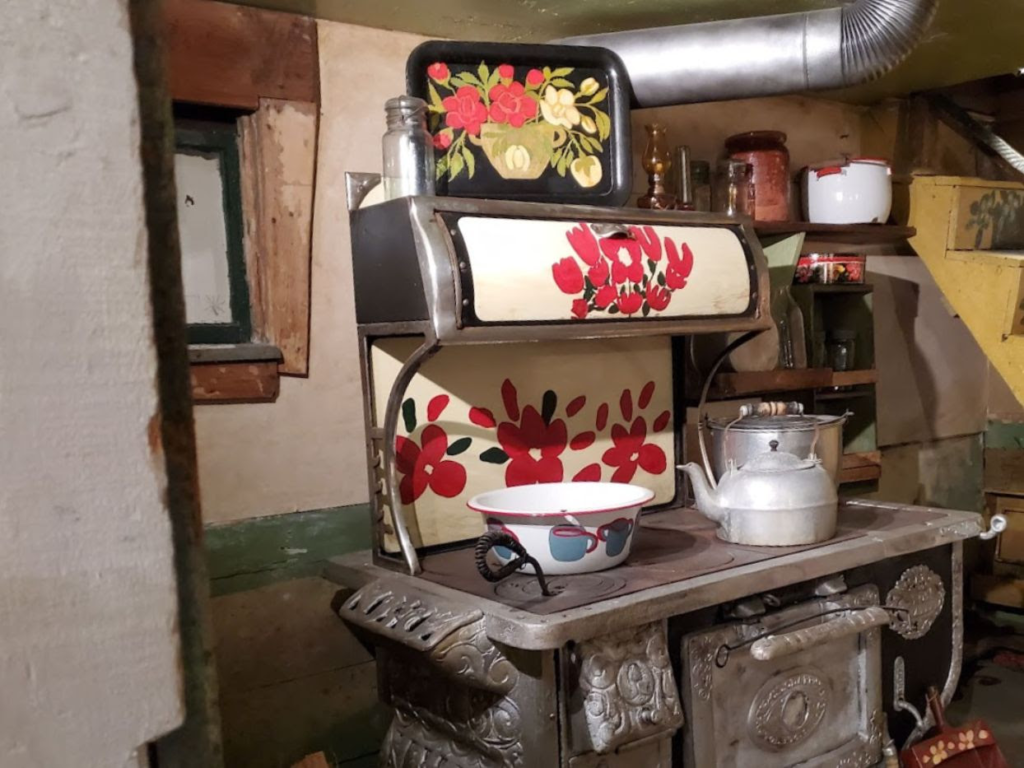
Ktchen stove
Later life and death
In the last year of her life, Lewis stayed in one corner of her house, painting as often as she could while traveling back and forth to the hospital for treatment of health issues. She died in Digby on July 30, 1970, from pneumonia.[17] Her husband Everett was killed in 1979 by a burglar during an attempted robbery of the house.[18]
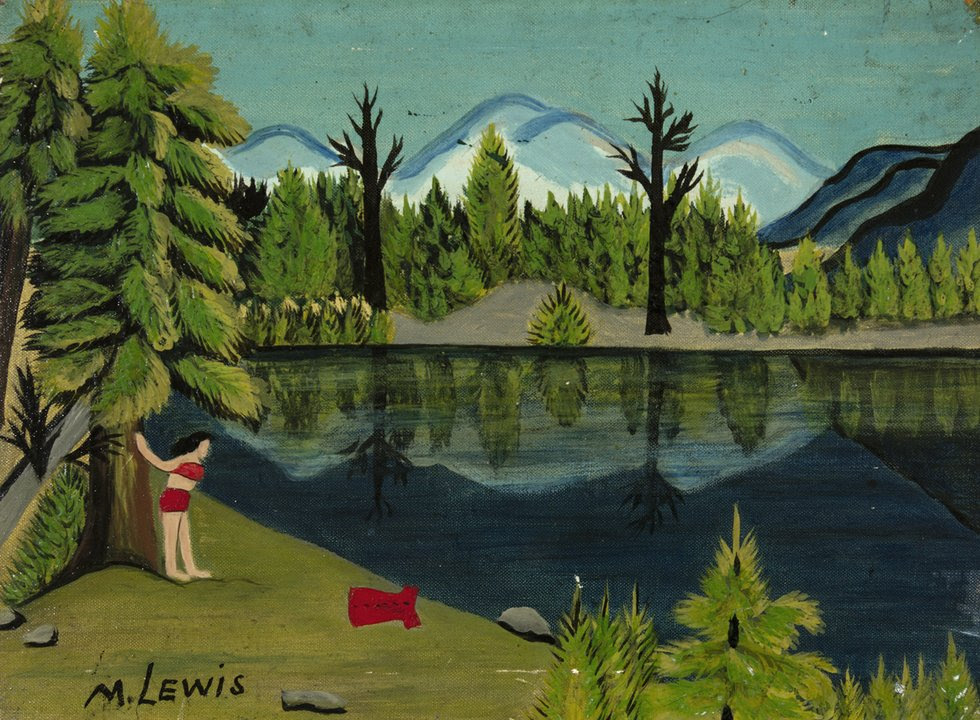
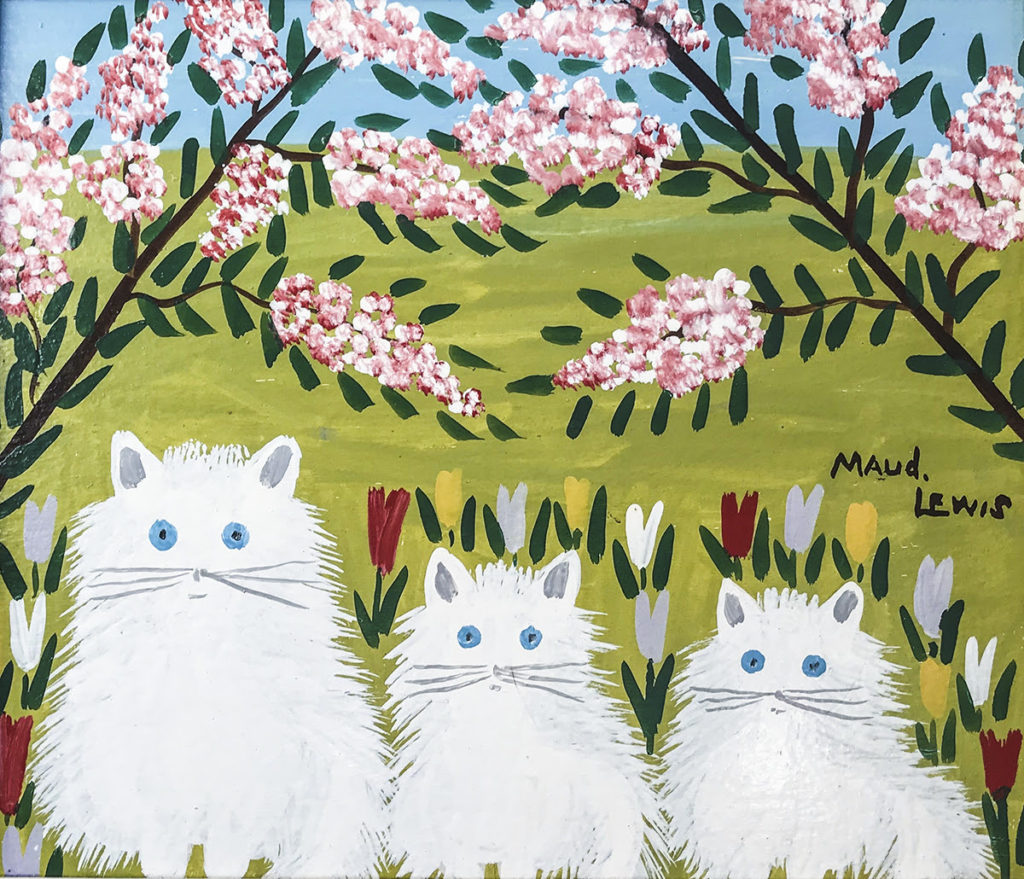
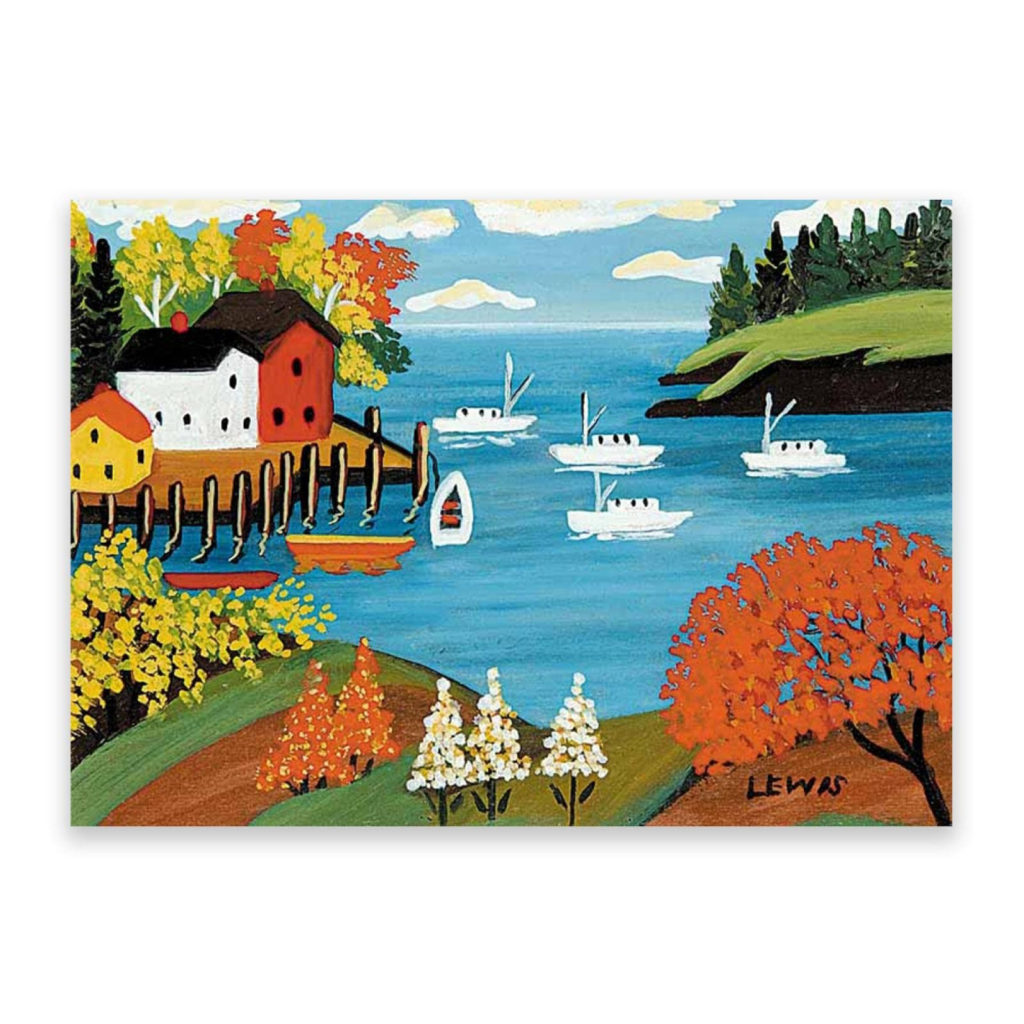
House
After Everett Lewis’ death, their painted house began to deteriorate. A group of concerned citizens from the Digby area started the Maud Lewis Painted House Society to save the landmark. In 1984, it was sold to the Province of Nova Scotia and transferred to the care of the AGNS,[4] which restored the house and installed it as part of its permanent Lewis exhibit.[4]
A steel memorial sculpture based on the Lewis’ house has been erected at the original homesite in Marshalltown, designed by architect Brian MacKay-Lyons.[19] A replica of the Maud Lewis House was built in 1999 by retired fisherman Murray Ross, complete with finished interior. It is a few kilometres north of Marshalltown on the road to Digby Neck in Seabrook.[19]
FRIDAY PHOTO OF THE DAY
SEND YOUR RESPONSE TO:
ROOSEVELTISLANDHISTORY@GMAIL.COM

Text by Judith Berdy
Thanks to Bobbie Slonevsky for her dedication to Blackwell’s Almanac and the RIHS
WIKIPEDIA
ART GALLERY OF NOVA SCOTIA
JUDITH BERDY
MAYA LEVANON-PHOTOS TIK TOK & INSTAGRAM
All image are copyrighted (c) Roosevelt Island Historical Society unless otherwise indicated
www.tiktok.com/@rooseveltislandhsociety
Instagram roosevelt_island_history
THIS PUBLICATION FUNDED BY DISCRETIONARY FUNDS FROM CITY COUNCIL MEMBER JULIE MENIN & ROOSEVELT ISLAND OPERATING CORPORATION PUBLIC PURPOSE FUNDS.


Copyright © 2022 Roosevelt Island Historical Society, All rights reserved.Our mailing address is:
rooseveltislandhistory@gmail.com

Leave a comment